As you know, I’m a huge fan of the Duelund DCA series of tinned-copper tone wire for building interconnects (the DCA20GA and DCA16GA).
In fact, one high-profile industry insider with impeccable credentials and taste told me that his Duelund DCA20GA interconnects terminated with Duelund RCA’s are the best sounding interconnects he’s heard at any price.
So, for a quad of Duelund RCA’s ($112 USD at Parts ConneXion), and four meters of Duelund DCA20GA ($27 USD at Parts ConneXion), you can build a pair of world class one-meter interconnects for $139 USD. If you don’t want to build them yourself Parts ConneXion will even build them for you for a reasonable fee.
A pair of world class one-meter RCA interconnects for $139 USD is pretty amazing in my book.
If you want to read up on the Duelund DCA line of tinned-copper tone wire, I refer you to “An Adventure in the Art of Tone with the Duelund Coherent Audio DCA Series of Tinned-Copper Cables, Part 1” in Issue 92 of Positive Feedback.
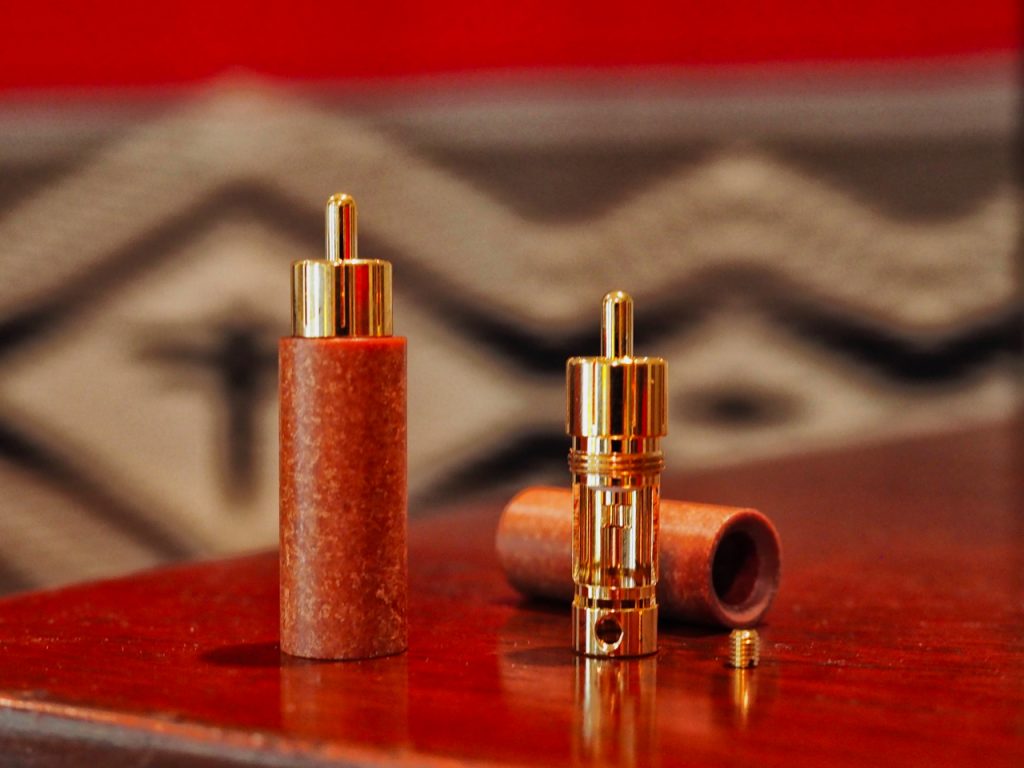
Duelund Gold RCA plugs.
However, this post’s purpose is to tell you more about the about the excellent Duelund RCA’s ($56 USD per pair at Parts ConneXion) that are the other half of the interconnect equation.
The OEM for the Duelund RCA’s is Furutech, whose “Swiss watch” level of quality is a peerless audio industry standard.
The Furutech FP-126 RCA is a favorite of Frederik’s, and from a sound quality, materials quality, and value standpoint, it was a perfect starting point for the Duelund RCA’s.
If you read my Positive Feedback article, “The Acoustic Revive Chronicles, Chapter 14: The Absolute Power Cables, The RCA Absolute FM Interconnects, and the PC-TripleC/EX Headshell Leads” in Issue 100, you’ll note that the exotic $11900 USD Acoustic Revive Absolute FM interconnects also utilize Furutech RCA’s (the Furutech CF-102, $171 USD per pair at Parts ConneXion).

Furutech CF-102 RCA
The Furutech CF-102 features a vibration damping structure composed of duralumin (a hard, light alloy of aluminum with copper and other elements) and brass, and carbon fiber. The metal structure has a non-magnetic silver-rhodium plating. The plug's electrode is made of a tellurium copper alloy, which offers a conductivity of 57% instead of the more typical 38% of a brass electrode.
From a design standpoint, the primary differences between the spendy Furutech CF-102 RCA and its less expensive brother, the Furutech FP-126, are that the CF-102 RCA uses a carbon fiber and non-magnetic stainless-steel handle for vibration damping purposes, and copper alloy set screws to secure the conductors, whereas the FP-126 uses solder connections and a more generic shell, but both share that same superb Furutech quality of materials internally.

Duelund Gold RCA plugs.
Similar in concept to the choice of carbon fiber & stainless-steel handles used for the vibration damping in the Furutech CF-102 RCA’s, custom Duelund handles made of a machined vacuum impregnated compressed paper similar to the casing Duelund uses for their CAST capacitors and inductors, replace the stock Furutech FP-126 handles, which follows Steen Duelund’s philosophy that natural materials sound better.

So, the intent is that the natural materials used for the Duelund RCA’s handle improve the already great sounding Furutech FP-126 plug by providing a more natural presentation of the music than the stock handle of the Furutech RCA, as well as providing a consistent brand identity with the Duelund CAST line of products.

Duelund CAST Sn-Cu Air Core Inductor.
The intent of Duelund RCA’s is to achieve a similarly high level of performance and quality as the Furutech CF-102, but for about one-third their cost ($171 USD per pair for the Furutech CF-102, and $56 USD for a pair of the Duelund RCA’s), providing an affordable alternative to the spendy Furutech CF-102 for DIY enthusiasts, and they are an excellent match to the Duelund DCA tinned-copper tone wire.
The Duelund RCA’s are constructed from Ultra-Pure, Ohno Continuous Casting (UP-OCC) copper (an ultra-high-quality copper), that is plated with either gold or rhodium (your choice) to protect it from oxidation.
The Duelund RCA’s receive cryogenic and demagnetizing treatments to maximize their performance. There’s also a set-screw in the clamp terminal that you can tighten down on the cable housing, which helps prevent solder connection breakage by holding the wires securely in place. The center pin is insulated with Teflon, a high-quality insulator, and which has long-term durability.
As described earlier, the machined handle of the Duelund RCA’s are made of that same sort of vacuum impregnated compressed paper that is used in the casing of the ultra-exotic Duelund CAST capacitors and inductors, which provides additional vibration damping.
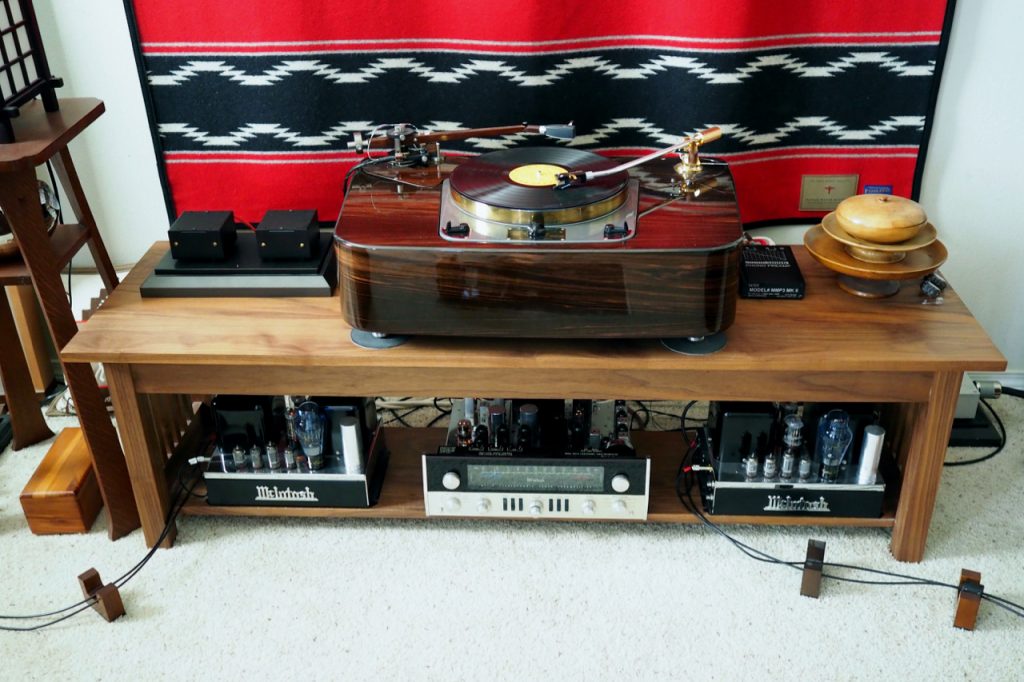
Vintage McIntosh MX110 preamplifier and MC30 monaural amplifiers.
You’ll also be glad to know that the dimensions of Duelund RCA’s also easily accommodate the narrow RCA input spacing typical of vintage hifi gear. That’s a plus for us vintage hifi enthusiasts, as a number of the other premium RCA’s I’ve tried were just too big in diameter to fit the typically narrow RCA spacing of vintage gear.
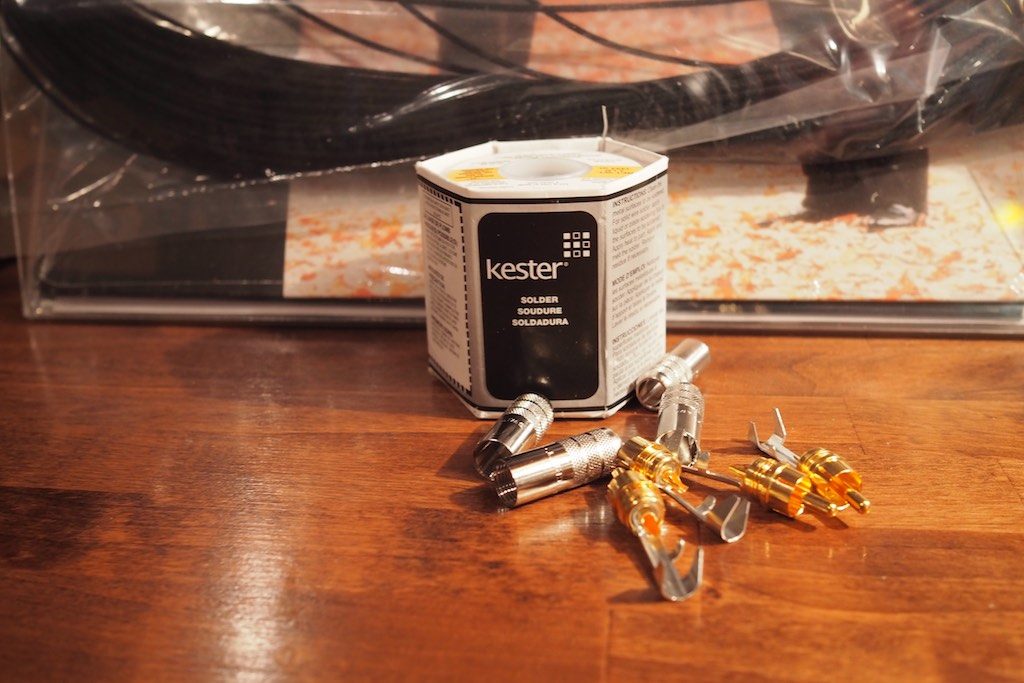
Kester solder and Switchcraft RCA's.
As I’ve mentioned before in these pages, when building DIY interconnects I typically use the simple, inexpensive, and good sounding Switchcraft SWC-3502A RCAs so I don’t break the bank when doing DIY interconnect trials (Switchcraft SWC-3502A RCA’s are $5.02 USD per pair at Mouser, for example). That way if the DIY interconnects don’t work out, I’m not out much if I end up tossing them.
However, when the über-quality and great sounding Duelund RCA plugs arrived in my life back in 2016, I knew the days were numbered for using the inexpensive Switchcraft SWC-3502A RCA connectors in my systems’ permanent interconnects.
That thought returned to mind recently, as some of my Switchcraft RCA’s have been causing me an interminable amount of grief.
To be fair, the Switchcraft RCA’s are fine for the sort of hifi enthusiast that plugs in the interconnects and doesn’t take them in and out of the system much, but if you do – like I do as an audio reviewer – they will eventually drive you crazy as they tend to loosen up and short out.
For an audio reviewer or enthusiast, who takes interconnects in and out of the system a lot, the Switchcraft RCA’s lifespan appears to be about two years, and then it’s time to re-terminate the cables with new RCA’s.
Over the course of the last two years every single pair of interconnects I’ve terminated with the Switchcraft RCA’s has had some of them fail. To be clear, this is not a dig at Switchcraft, their design just wasn’t intended for the sort of long-term audio reviewer abuse that I heap upon them in the course of writing about hifi for you.
During that same amount of time none of my Duelund Gold or Rhodium RCA’s had any issues, and they have easily stood up to the remarkable amount of “in and out” abuse I heap upon them as a reviewer, and they still look and perform like the day they were brand new.
Recently, some of the Switchcraft RCA’s on one of my Schick tonearms and a pair of interconnects failed. That was the last straw for me, so I decided it was time to make the switch to the Duelund RCA’s permanently for those two applications.
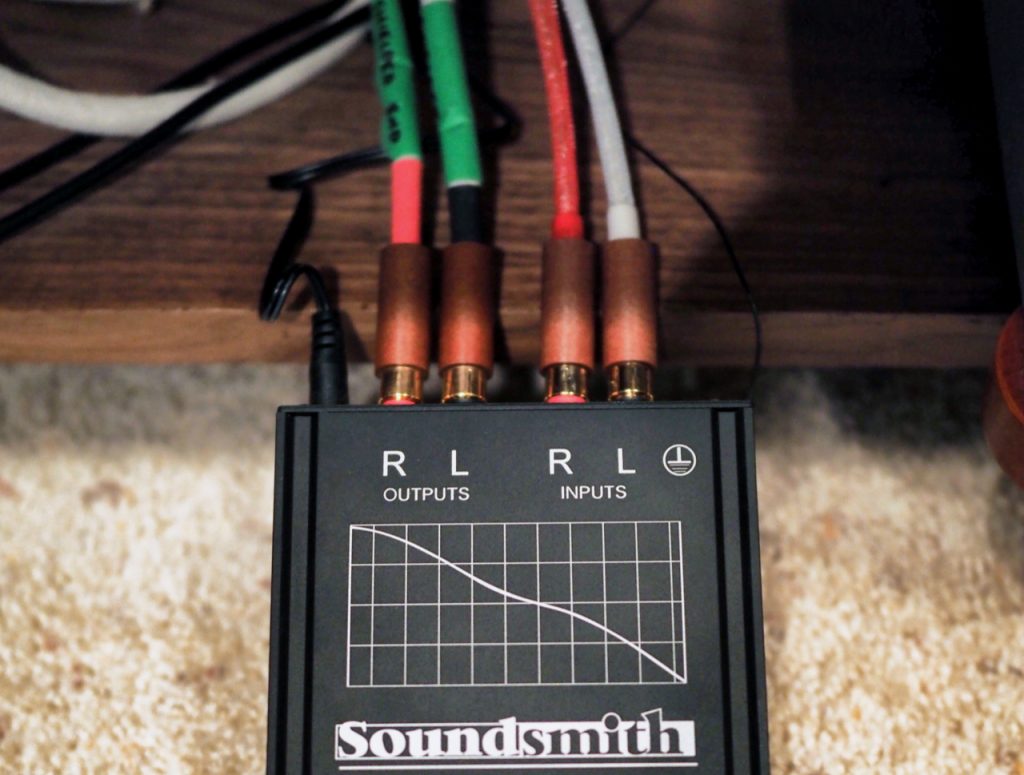
Duelund RCA's on tonearm leads (right), Duelund RCA's on shielded DCA20GA interconnects (left).
My first re-termination adventure with the Duelund RCA’s was on my Schick tonearm leads (above).
Back when I reviewed the Pete Riggle Audio Engineering Woody SPU tonearm (Positive Feedback Issue 88), the difference in performance between the Schick and Woody SPU tonearms was significant - favoring the Woody SPU - with my Ortofon SPU Classic GM MkII stereo phono cartridge.
Interestingly, the performance difference was reversed with my Ortofon SPU Mono CG 25 Di MkII mono phono cartridge, where the Schick had a slight performance edge.
That actually worked perfectly for me on my Classic Turntable Company hot-rodded Garrard 301, because I had planned to use two tonearms, the Schick with the Ortofon SPU Mono CG 25 Di MkII mono phono cartridge, and the Woody SPU with the Ortofon SPU Classic GM MkII stereo phono cartridge – so I got the best of both worlds.
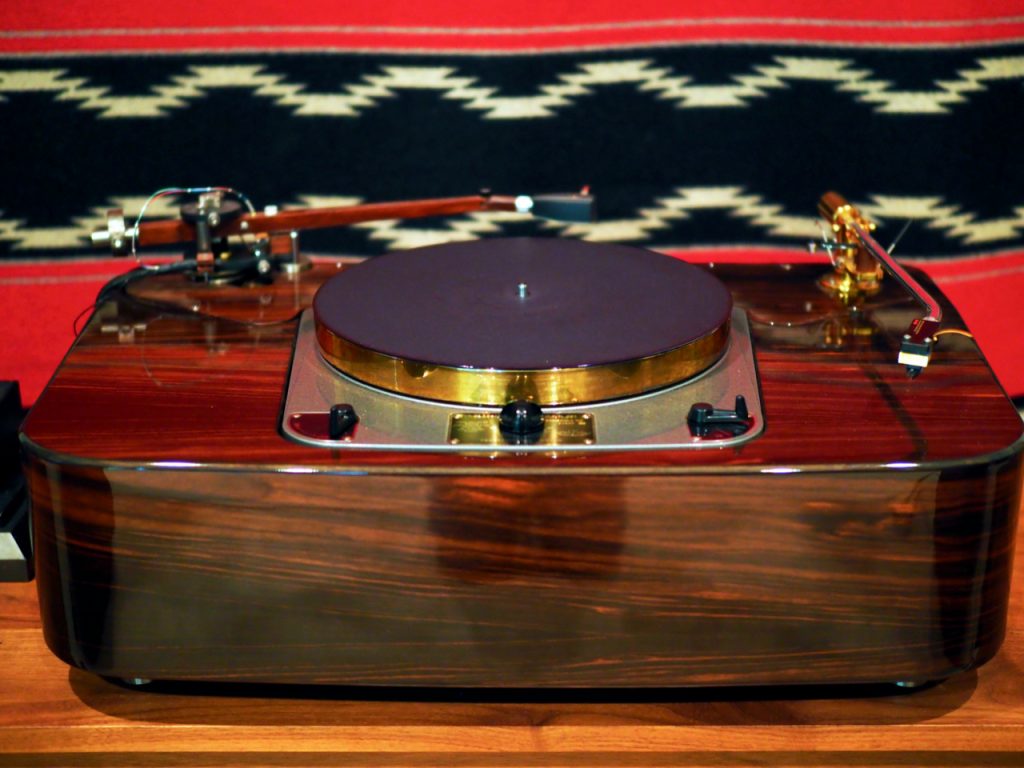
At the time Pete Riggle had wondered how much of the performance difference was due to the tonearm wiring, and how much was due to the design differences between the two arms, so Pete rewired the Schick tonearm with the same wire he used in his Woody SPU tonearms, and you guessed it, I asked Pete to terminate the wires with the Switchcraft RCA’s.
Well it turned out that the wire comparison revealed that the wires used by Pete and the wire used by Thomas sounded almost identical, so our comparison was uneventful, and now a few years later one of the Schick’s rewired Switchcraft RCA’s wasn’t connecting properly, producing prodigious left channel hum.
Off came the Switchcraft RCA’s and on went the Duelund Gold RCA’s.
As you would expect, I was very familiar with the performance of my Schick with the “Woody wire” and Switchcraft RCA’s, so I was wondering what I would hear with my newly installed Duelund Gold RCA’s.

With the excellent Tommy Emmanuel Accomplice One album spinning on the ‘table my first reaction was how much more body and presence the images had, as well as noticeably better overall tone. The Duelund Gold RCA’s sounded more “organic” and natural, more vibrant, more present, and with more nuance being audible.
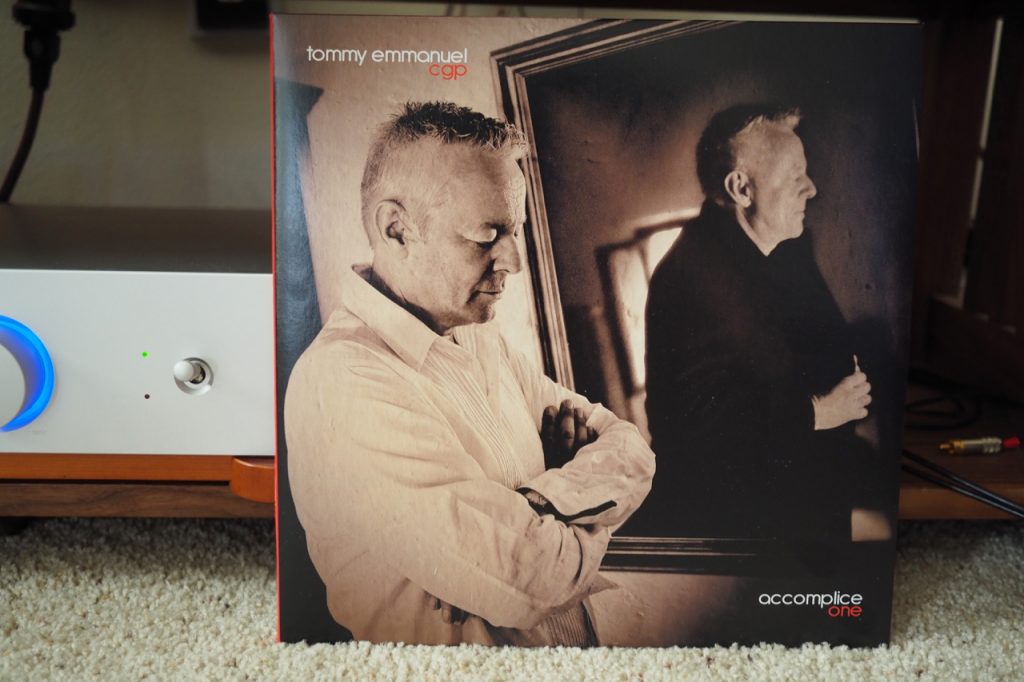
Actually, considering the magnitude of performance improvement, the $56 USD for a pair of Duelund Gold RCA’s seemed quite reasonable on a performance improvement per dollar basis.
Next up was replacing some failed Switchcraft RCA’s on my treasured two-meter Duelund DCA20GA interconnects with the Duelund Gold RCA’s.

The result was much the same, with the Duelund Gold RCA’s having much more body and presence with images, noticeably better overall tone - a more “organic” and natural tonal balance - and a more vibrant, more present, and more musically nuanced presentation.
The Duelund RCA’s are an easy recommendation if you’re building a new set of DIY Duelund DCA20GA (or other) interconnects, or if you need to re-terminate some interconnects.
In a future post I’ll be telling you about building some two-meter interconnects using the new 600V Duelund DCA20GA tinned-copper hookup wire intended for those higher voltage applications.
For that post I'll provide detailed instructions on how to make an unshielded DCA20GA interconnect using the Duelund RCA's, and I'll share a few handy construction tips with you as well.
For those interested in building a shielded version of a Duelund DCA20GA interconnect you can read about how to do it HERE.
Some of you will be interested to know that a number of Golden Era audio companies like McIntosh and Altec, for example, used tinned-copper wire in their electronics. Do you want that gorgeous Golden Era musicality in your gear? A little Duelund tinned-copper wire will help get you there.
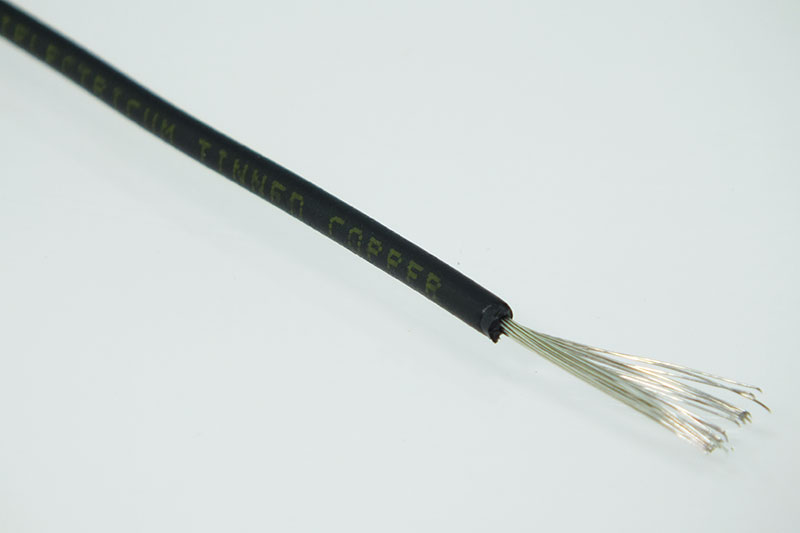
Duelund 600V DCA20GA tinned-copper wire
While the 600V Duelund DCA20GA tinned-copper hookup wire is intended for wiring electronics rather than building interconnects, I thought building an identical two-meter pair of 600V Duelund DCA20GA interconnects would be a great way to evaluate the 600V Duelund DCA20GA's overall sound quality compared to my regular DCA20GA interconnects.

Duelund Gold RCA plugs.
As always, thanks for stopping by, and may the tone be with you!





























